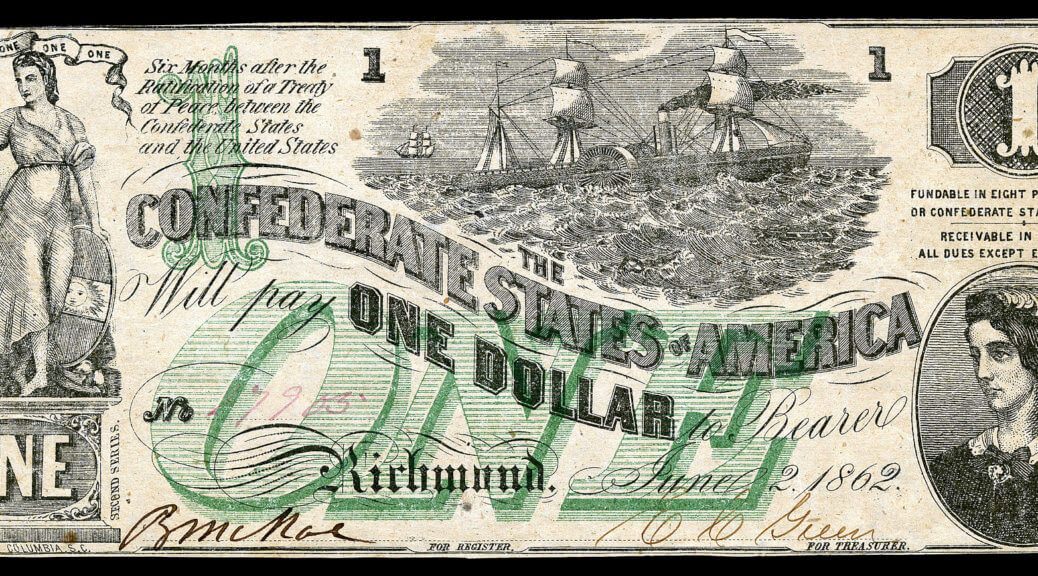Today’s guest is Bryan Cutsinger of George Mason University, discussing his paper, “Seigniorage in the Civil War South.”
During the U.S. Civil War, the Confederate Congress adopted three currency reforms that were intended to reduce the quantity of Treasury notes in circulation by inducing the money-holding public to exchange their notes for long-term bonds. In this paper, we examine the political factors that influenced the adoption of the reforms and their effect on the flow of seigniorage – revenue that the government derived by using the newly-printed Treasury notes to purchase the goods and services it required. We argue that the bifurcation of the Confederate Congress into two groups – those legislators that represented the Confederacy’s interior and those from areas no longer under Confederate control – contributed to the adoption of the reforms. Our findings indicate that representing an area outside of the rebel government’s control increased the likelihood that a legislator would support efforts to reform the currency by over 90 percent. In addition, our results indicate that the rate of monetary expansion in the South was below that which would have maximized the revenue from seigniorage. We find that the reforms reduced the flow of seigniorage by approximately 57 percent, depriving the Confederate government of much-needed revenue.
Subscribe to Economics Detective Radio on iTunes, Android, or Stitcher.

